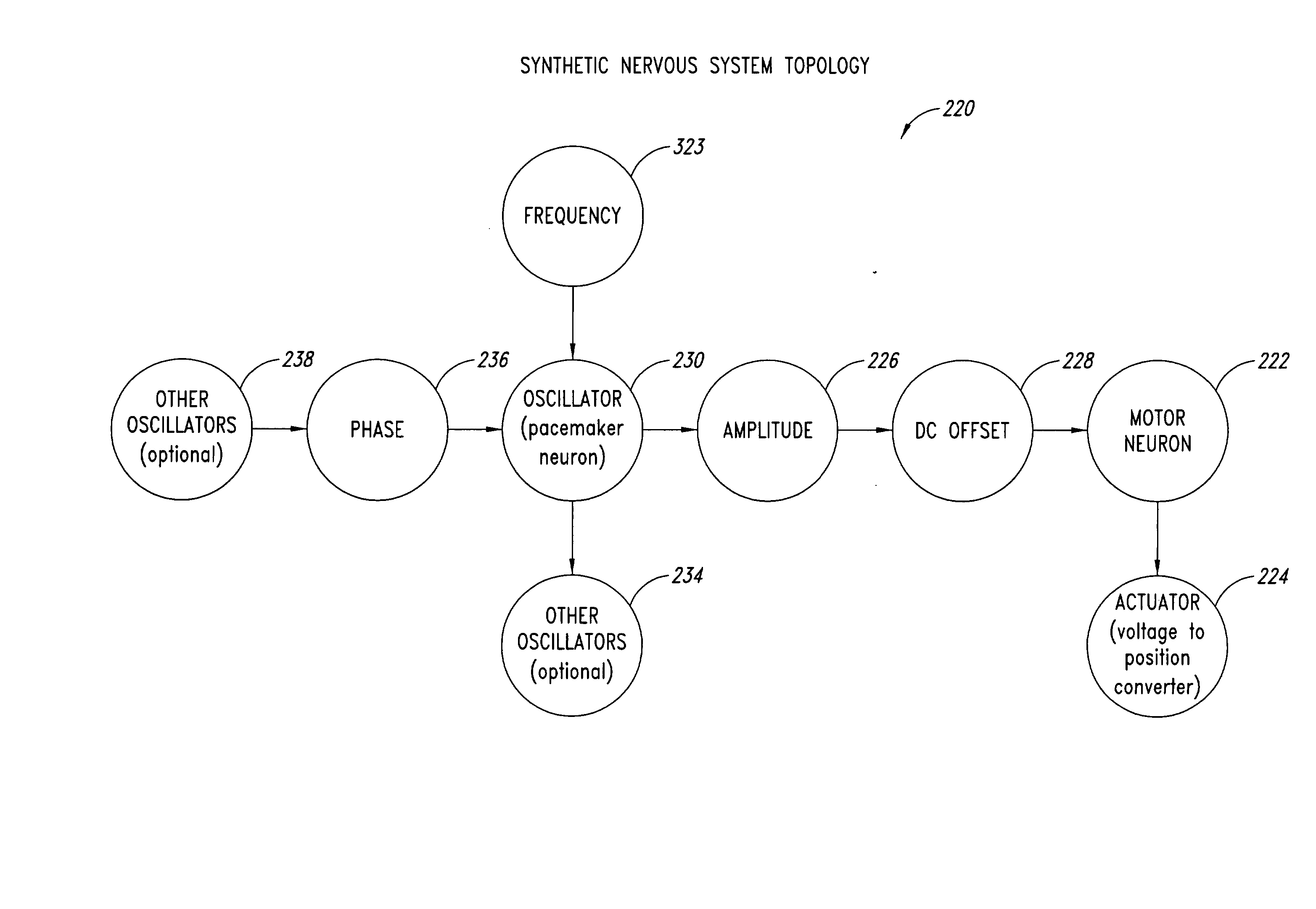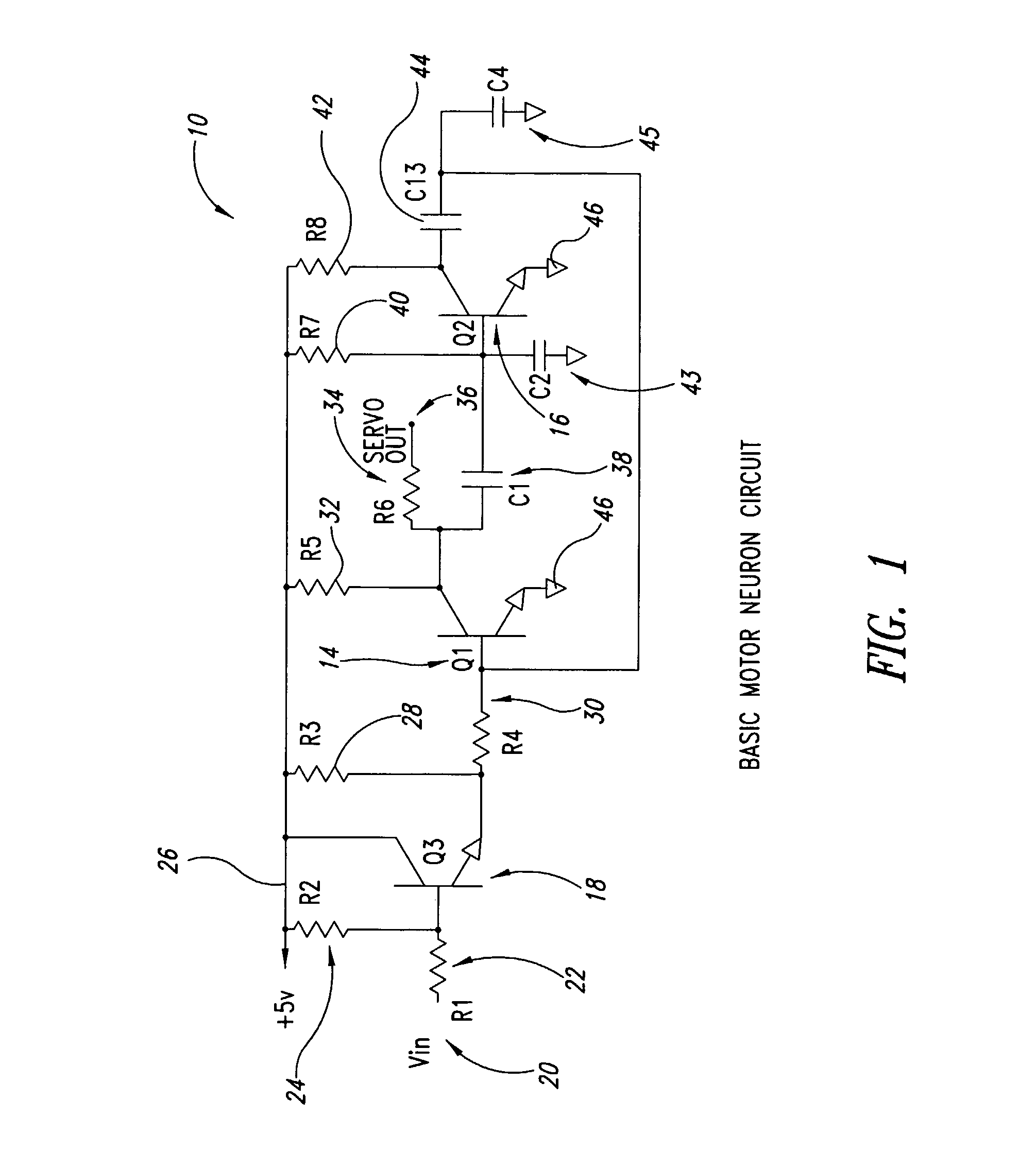Synthetic Nervous System for Robotics
a robotics and nervous system technology, applied in the field of analog circuitry, can solve the problems of limiting feedback control beyond the power consumption of motors, complex circuits using custom silicon and digital signal processors, and high cost, and achieve the effects of minimizing circuitry, maximizing processing power, and minimizing circuitry
- Summary
- Abstract
- Description
- Claims
- Application Information
AI Technical Summary
Benefits of technology
Problems solved by technology
Method used
Image
Examples
Embodiment Construction
[0038]FIG. 1 is a circuit diagram of a basic motor neuron circuit 10 formed in accordance with one embodiment of the invention. This circuit is configured as a waveform generator for use with commercially available model-hobbyist type servos. The circuit 10 includes a rectangular wave multi-vibrator circuit formed of a first transistor (Q1) 14 and a second transistor (Q2) 16. A third transistor (Q3) 18 is configured to operate as a voltage-controlled resistor and is coupled between an input 20 (Vin) and a control terminal or base of the first transistor 14. A first resistor 22 (R1) is coupled between the input 20 and the control terminal or base of the third transistor 18, and a second resistor 24 (R2) is coupled between the control terminal or base of the third transistor 18 and a voltage source 26, which is preferably set at 5 volts for this application. The second resistor 24 provides a bias to the third transistor 18 so that it operates in the linear region and, functionally, as...
PUM
 Login to View More
Login to View More Abstract
Description
Claims
Application Information
 Login to View More
Login to View More - R&D
- Intellectual Property
- Life Sciences
- Materials
- Tech Scout
- Unparalleled Data Quality
- Higher Quality Content
- 60% Fewer Hallucinations
Browse by: Latest US Patents, China's latest patents, Technical Efficacy Thesaurus, Application Domain, Technology Topic, Popular Technical Reports.
© 2025 PatSnap. All rights reserved.Legal|Privacy policy|Modern Slavery Act Transparency Statement|Sitemap|About US| Contact US: help@patsnap.com



